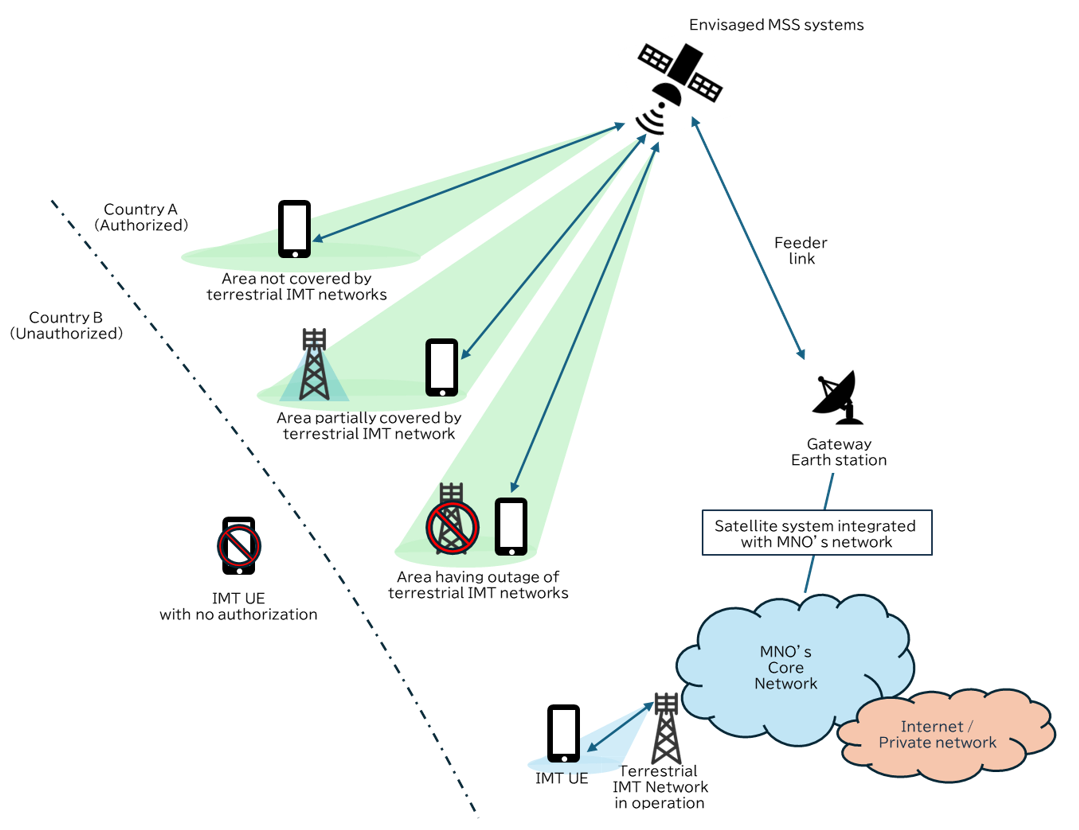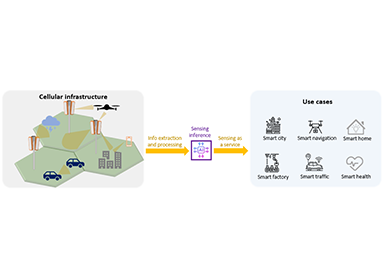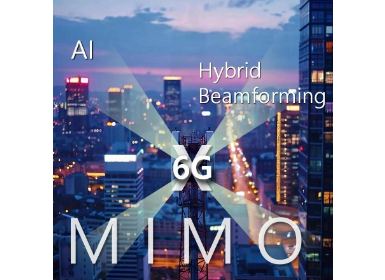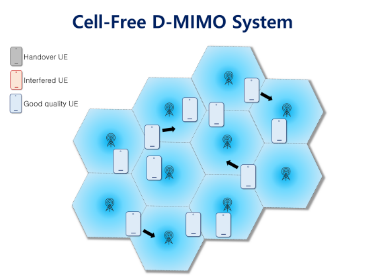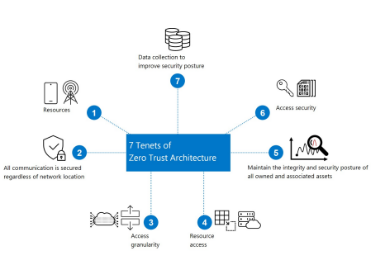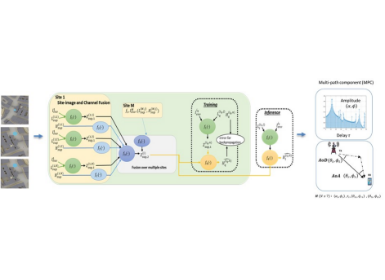Communications
NTN and TN networks for the 6G era: technology overview and regulatory challenges
Introduction
3GPP Non-terrestrial networks (NTNs) is an effort to integrate satellite communications into mobile networks, by modifying 3GPP technology design for terrestrial networks (and related core functions) to address the challenges of satellite links. In this article we explore some of the challenges like long propagation delays, Doppler offsets, and rapid satellite movement. We also explore 3GPP Releases 18 and 19 which continued the evolution with enhancements to integration with terrestrial networks as well as future releases and regulatory issues that are currently being discussed.
First release of NTN
Deployment and use cases
Satellite networks are primarily distinguished by the orbital altitude of the satellites. A Lower Earth Orbit (LEO) satellite has an altitude between 200 km to 1600 km above the sea level, orbiting the earth at very rapid speeds. Due to their limited coverage area, LEO satellites require large constellations to ensure continuous service. In contrast, Geostationary Earth Orbit (GEO) satellites are at 35786 km above the sea level. At this altitude the satellite on the equatorial plane will be stationary with respect to the earth. A Medium Earth Orbit (MEO) satellite has an orbital altitude between LEO and GEO. A satellite payload may be of a transparent or a regenerative type. Transparent payloads act as a simple relay, amplifying and forwarding the signals from a base station on the ground towards the area of coverage on the ground. Regenerative payloads, on the other hand, house the base station in the satellite itself.

Figure 1. Orbital altitudes of satellite networks
Use cases of 3GPP NTNs are diverse, including smartphone access (providing connectivity directly to smartphones, in addition to traditional terrestrial infrastructure) and fixed wireless access. Prior to 3GPP’s work on NTN, satellite networks relied on proprietary air interfaces, which lacked interoperability and hindered economies of scale.
Solving the challenges of NTN
The integration of 5G NR with satellite communications at 3GPP presented several fundamental challenges. Unlike terrestrial deployments, where base stations are relatively close to users, satellites are significantly farther away and the satellites - thus the cells - will move.
The distance to the satellites results in longer propagation delays – up to 250 ms for GEO satellites - compared to a terrestrial networks, which never exceeds one ms. This is a significant problem for the 5G NR air interface relying on Orthogonal Frequency Division Multiplexing (OFDM) which requires very strict synchronization. The distance between the satellite and the device also causes the non-terrestrial cell to have a diameter of more than 100 km, which means that a single cell may cover multiple countries. This creates technological but also regulatory challenges, as explained later in this blog post.
Additionally, the rapid movement of the satellites - travelling at several km per second for LEO - introduces substantial Doppler offsets - further complicating the synchronization required by OFDM. This movement of the satellite also necessitates frequent cell handovers, sometimes occurring as often as every 10 seconds.
To address these challenges, 3GPP introduced NTN enhancements in Release 17, for both NR NTN and IoT NTN. NR NTN is an enhancement of 5G NR specifications for 5G-Advanced, while Internet of Things NTN is an enhancement of the LTE Machine Type Communication (eMTC) and Narrowband IoT (NB-IoT) device types defined in 4G specifications.
To solve the synchronization issues related to the large propagation delays and the large Doppler offsets 3GPP was faced with either redesigning the synchronization procedures or adapt a solution for the device to synchronize autonomously, i.e open-loop synchronization. To enable for commonality with Release 15 5G NR, and to allow for smaller changes to the 5G NR air interface, it was agreed to go with the latter option.
The solution adopted was that the device would use the position of the satellite and device position to self-synchronizing by adjusting for the propagation delays and the Doppler offset. The position of the satellite is acquired based on orbital information from broadcast system information and the device acquires its own position using GNSS (Global Navigation Satellite System). Procedures were also introduced whereby a device regularly reacquires the satellite position and regularly reacquires its own position via GNSS.
For deployments with high propagation delays the achievable throughput can be reduced by Hybrid ARQ (HARQ), which is a procedure designed to retransmit failed transmissions. Enhancements were thus introduced to enable turning off HARQ in a dynamic fashion. HARQ can thus be employed for low-throughput transmissions requiring high reliability, but disabled for high throughput transmissions.
It was realized that the location of the device could also be used for other procedures. For instance for the issue of a cell covering multiple countries, which may cause issues for a base station to select the correct core network to serve the device. For this issue the device location is sent to assist the base station in selecting the core network to serve the device. Furthermore, for performing mobility between cells, mobility based on the device location was introduced.
For solving the issue of rapid movement of the satellites, some solutions were introduced. For instance, cell-level mobility enhancements were also introduced where the device can be configured to trigger a conditional handover at a configured time to another cell.
The 3GPP Release 17 NTN is general enough to support LEO, MEO and GEO satellite deployments. The FR1 bands supported for NR NTN and IoT NTN can be seen in Table 1 along with 3GPP Release introduced. This is expected to continue to evolve.

Table 1. Bands specified by 3GPP from 3GPP TS 38.101-5 and 36.102.
Rel-18/19 enhancements of NTN
Releases 18 and 19 continued to evolve NTN capabilities. Enhancements include mobility enhancements, coverage enhancements, Multicast Broadcast System (MBS) enhancements, introduction of a satellite TDD band for NB-IoT and introduction of higher frequency bands for NR NTN (Table 2).

Table 2. Bands specified by 3GPP from 3GPP TS 38.101-5.
Due to the different use cases of NR NTN and IoT NTN, the enhancements have been following somewhat different paths. Some of the highlights of the enhancements include:
Key features for integration with terrestrial networks
In a terrestrial network, when a device operates in idle or inactive mode, the device will regularly search for the most suitable cell to “camp” on, which involves measuring and detecting the cells. In a terrestrial network the device will typically only need to have the frequency in order to efficiently detect cells. To facilitate idle mode mobility between a terrestrial and an NTN, enhancements were introduced to broadcast assistance information in terrestrial networks. This type of mobility is supported for both IoT NTN and NR NTN as well as from 4G LTE terrestrial network to NR NTN.
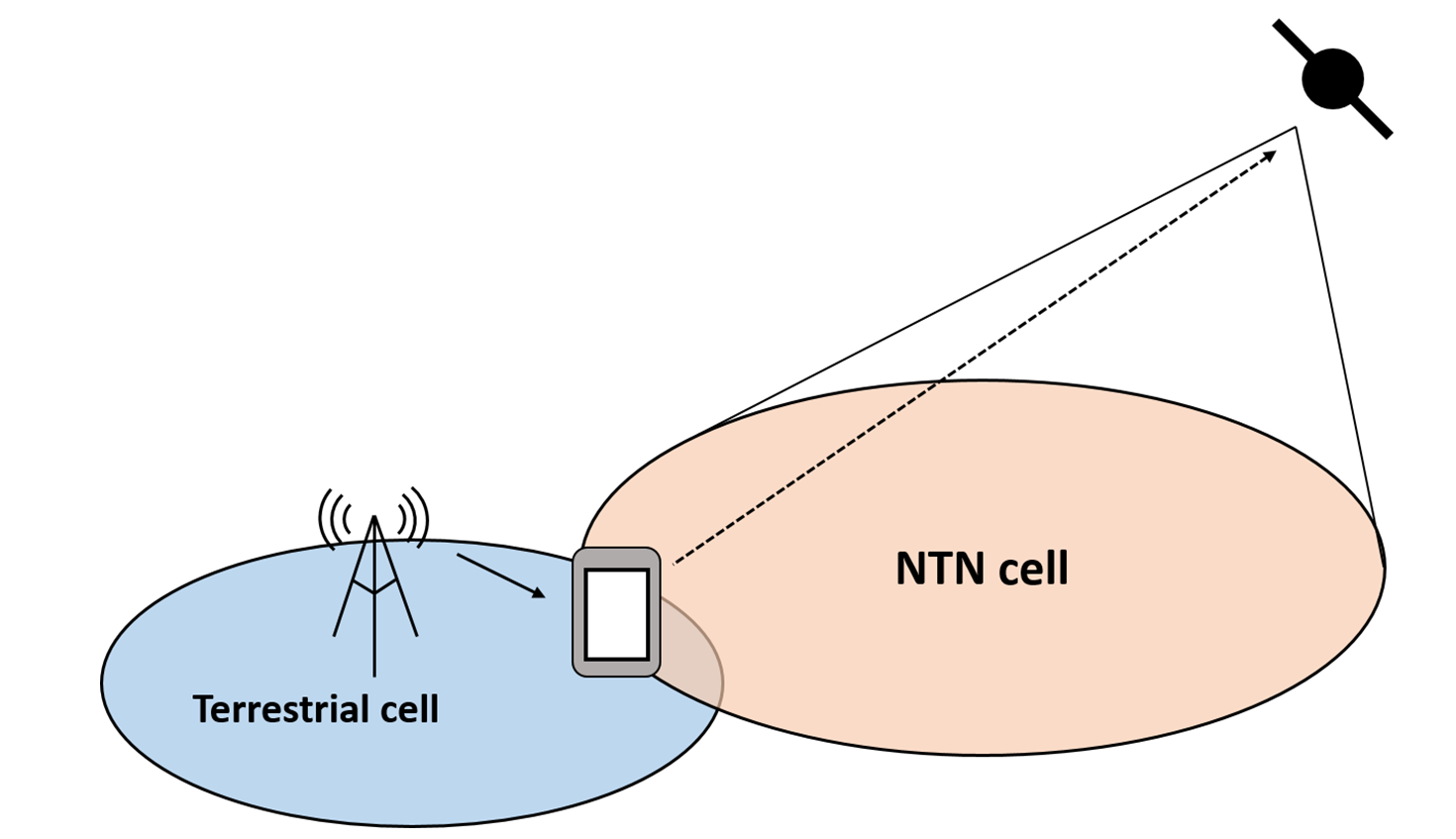
Figure 2. Mobility between terrestrial cell and NTN cell
Future of NTN
Due to continued strong interest in the 3GPP community, development of NTN will continue to be evolved for 5G-Advanced and 6G.
Rel-20 5G-Advanced
As a part of continued standardization of 3GPP NTN in 5G-Advanced, the following will be worked on:
6G (Rel-20 and beyond)
The Release-20 Study items for 6G Radio Access Networks and System Architecture both include aspects of supporting NTN. This is different from how NTN was studied and supported in 5G, where NR NTN was introduced several years after the first release of 5G NR. By studying NTN along with the study on terrestrial 6G, it is expected that the radio and protocol design of 6G NTN will be more harmonized.
6G NTN is expected to be able to take advantage of several aspects that will be developed terrestrial 6G, such as enhanced network energy efficiency and energy savings, scalable and forward-compatible design for diverse device types and system simplification. For instance, new designs without any backward compatibility restrictions will be considered for more efficient energy savings for terrestrial 6G, and this may be applicable to 6G NTN. 6G will prioritize the design of TN while facilitating seamless connection with NTN. This approach will enable the development of radio access technologies that harmoniously combine terrestrial and non-terrestrial networks, ensuring compatibility and simplifying implementation and operation.
Regulatory aspects
As outlined earlier, the currently specified 3GPP NTN bands are on Mobile Satellite Service (MSS) spectrum allocations (L-band and S-band), i.e., they are dedicated to MSS usages. These kinds of services have been in use for decades and do not present new challenges in radio regulation. The spectrum is assigned to a Satellite Network Operator (SNO) and they can connect to end user devices independently from terrestrial Mobile Network Operator (MNO) networks.
An emerging approach to provide satellite connectivity on terrestrial International Mobile Telecommunications(IMT) bands, which is known as DC-MSS-IMT (Direct Connectivity between Mobile Satellite Service stations and IMT UEs) is under discussion at the International Telecommunication Union Radiocommunication Sector(ITU-R). IMT, as defined by ITU-R, encompasses all generations of mobile communication systems, including IMT-2000(3G), IMT-Advanced(4G), IMT-2020(5G) etc. In this model, the satellite transmission would take place in terrestrial IMT bands, which are assigned to an MNO. Thus, the satellite coverage would be complementary to terrestrial coverage and would take place under the end-to-end responsibility of the MNO. However, current international radio regulations do not permit satellite communication systems to operate within terrestrial IMT bands over territories. To resolve this issue, ITU-R is now under discussion to allow DC-MSS-IMT within the terrestrial IMT bands.
This shift is motivated by the desire to enable all IMT devices – including legacy devices without native 3GPP NTN support - to access networks via satellite connection. Legacy devices would connect to satellites as if they were terrestrial base stations, with all necessary radio link compensations handled by the satellite payload. The concept of satellite link complementing terrestrial IMT networks is depicted in the figure below, where an IMT UE with no or limited access to terrestrial basestation would connect via MSS satellite. The end-to-end connection would remain between the UE and its MNO’s core network as usual.
The candidate terrestrial IMT bands to allow DC-MSS-IMT under consideration within the ITU-R also reflect this aim of covering potentially all legacy devices (the table below). In ITU-R discussions, the support is expected to extend to all IMT UEs, i.e., IMT-2020, IMT-Advanced and IMT-2000, although the MNO/SNO business case may dictate whether older devices would be supported.
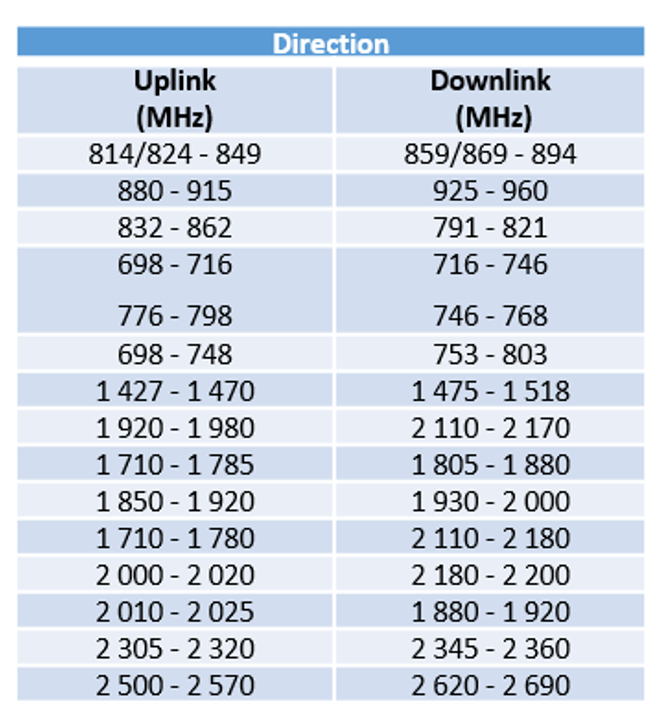
Table 3. List of the IMT candidate frequency arrangements and associated frequency bands (WP 4C LS to other WPs in 5D/415)
ITU-R is expected to develop regulations to clarify how these operations would take place at its next World Radiocommunication Conference in 2027. Adopting DC-MSS-IMT use in Radio Regulations would allow a better coordinated approach in providing complementary IMT coverage from MSS satellites. In the absence of such global regulations, ITU member states would develop either their own solutions or there would be some regional approaches adopted. Some geographically large countries such as the USA and Brazil have already allowed SNOs to operate on terrestrial IMT bands under specific national rulings but no international regulations are in place as of yet. The FCC in the USA issued a ruling on SCS (Supplementary Coverage from Space), where SNOs collaborate with terrestrial MNOs. Several spectrum bands below 2 GHz are within the scope of the ruling, and SNOs would lease spectrum access from a terrestrial MNOs having a licence on a given band.
Using IMT spectrum raises complex coexistence issues, within countries and between countries, including in-band and out-of-band interference and spurious emissions. For example, the FCC SCS ruling sets up area boundary constraints and out-of-band emission limits.
There are also questions regarding the spectrum licence where e.g. in Europe IMT devices are only allowed to connect to terrestrial base stations. Under the FCC ruling SNOs are expected to obtain a specific SCS licence to operate on the band they lease from an MNO. This is in contrast to Ofcom in the UK where it is planning to modify the MNO licences so that they would also cover the satellite payload connecting to a device. Other options are to extend a licence of a device to connect to a satellite, but this is thought to be difficult to manage by national regulatory authorities.
Conclusion
In this blog post we have explored key developments on NTN in 3GPP and ongoing regulatory discussions. Since the industry is still developing, the shape and form of future NTN and their integration with terrestrial networks will become clearer in the coming years.

